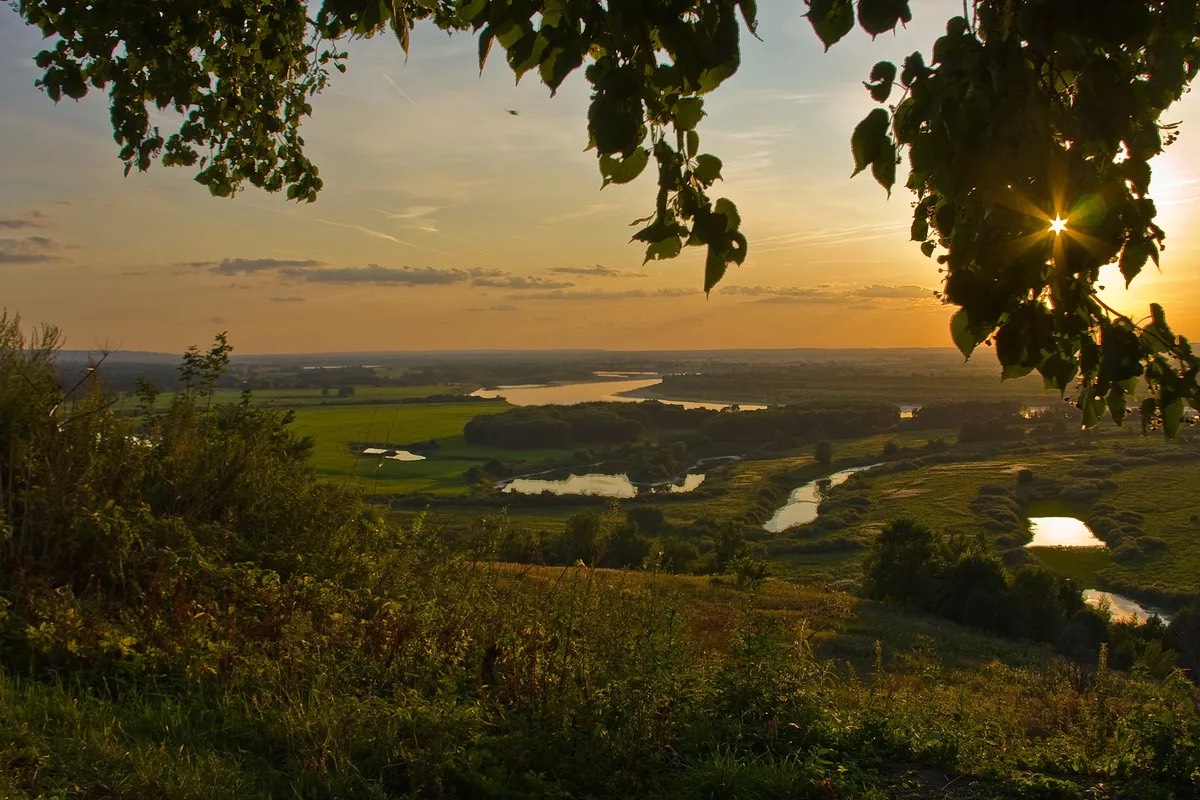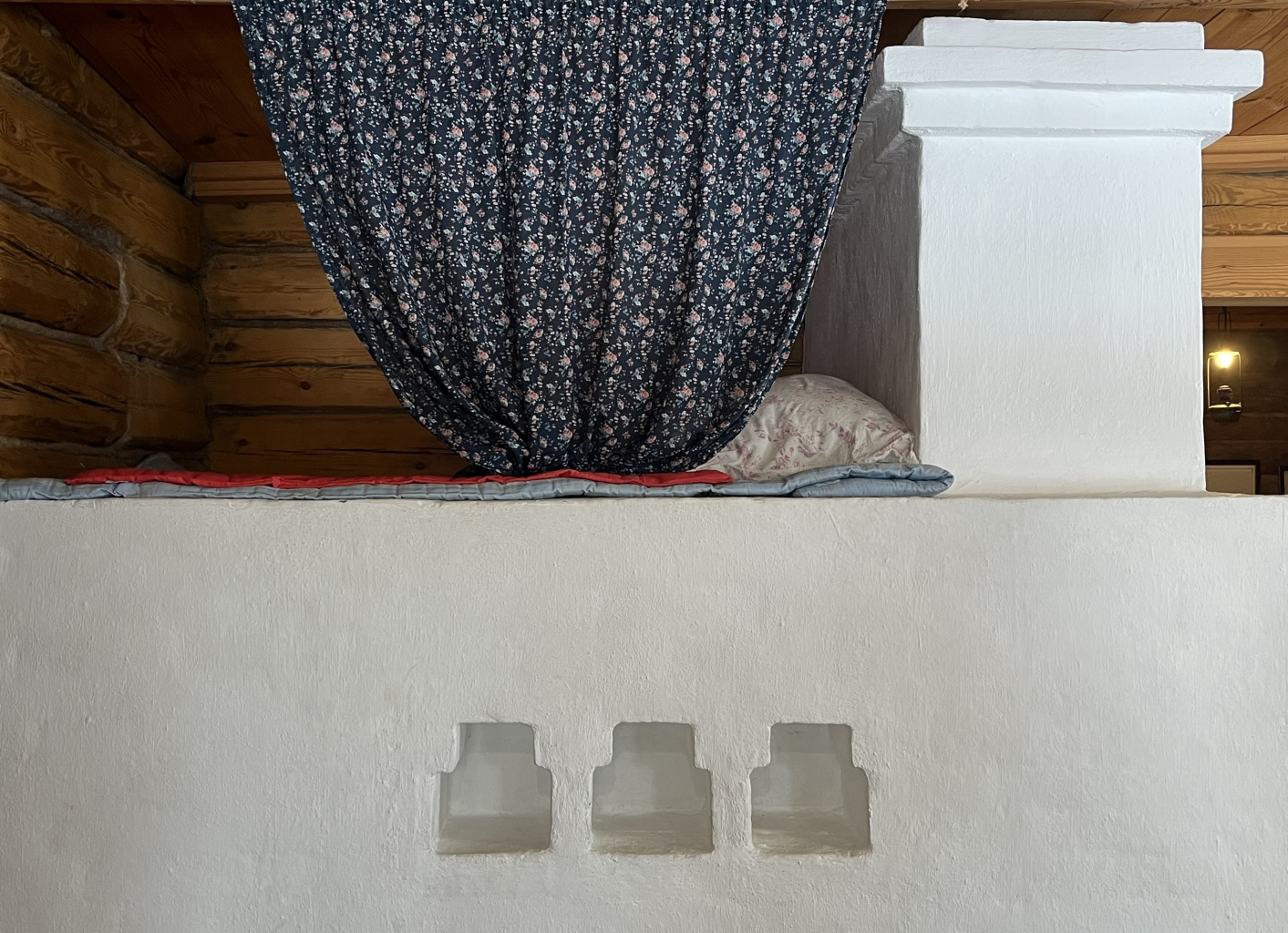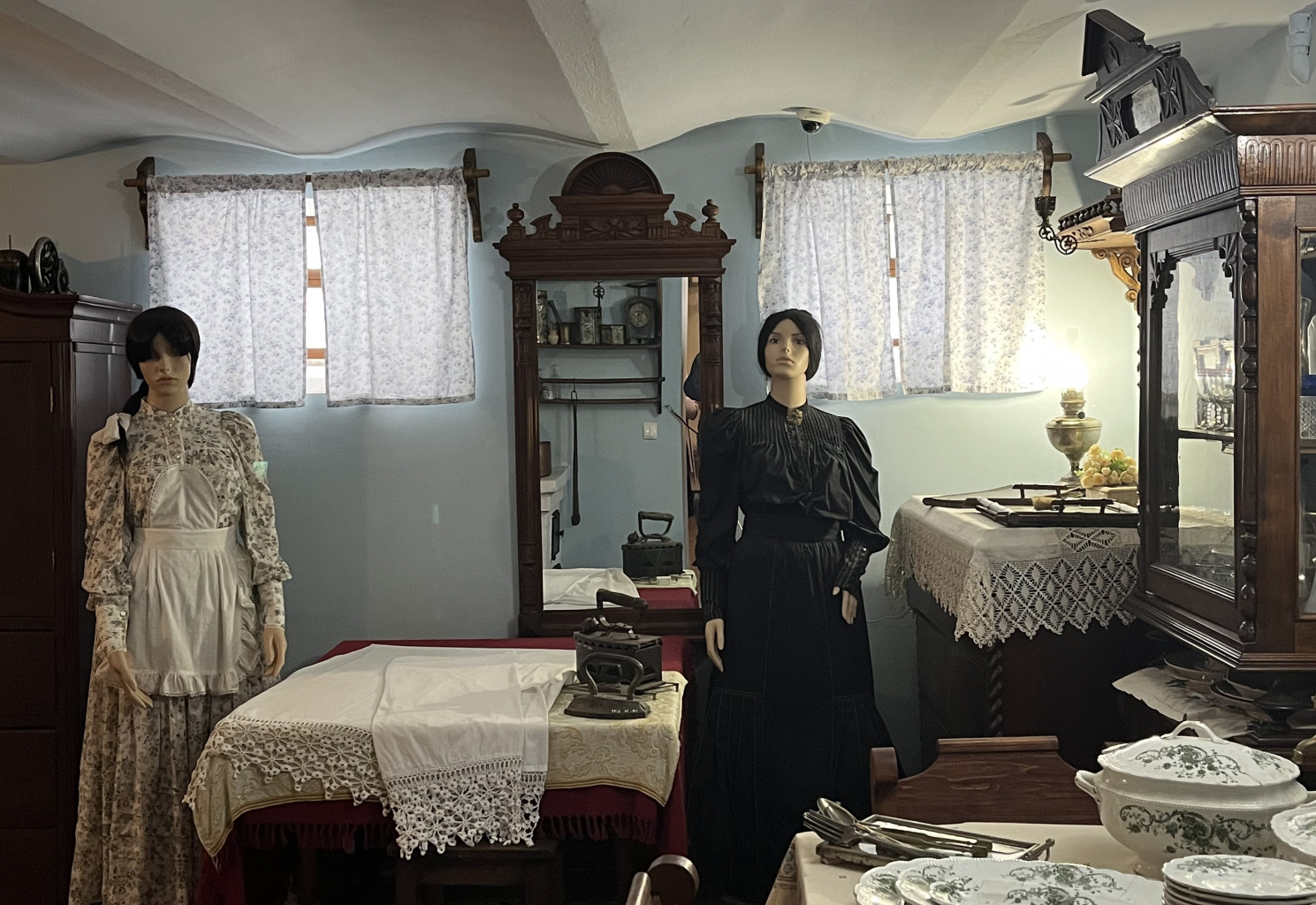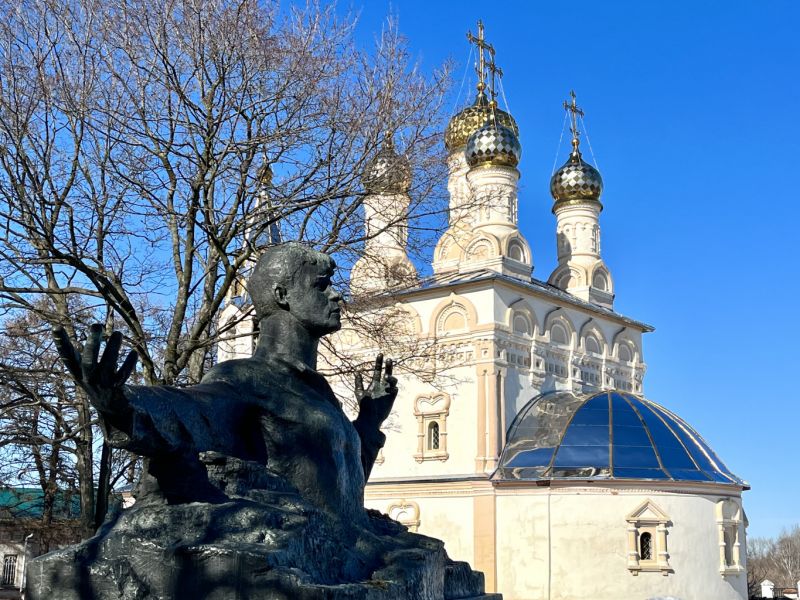Tourists visiting the city see an unusual monument on the promenade devoted to the saying “In Ryazan, the mushrooms have eyes; we eat them and they watch us!”. But the Ryazan people are mostly proud not of local mushrooms but of the famous Russian poet Sergey Yesenin, their fellow countryman. At the railway station, tourists see a graffiti with his image. The “Moscow-Ryazan” route is one of the most popular weekend tour options; tourists can get to the city from Moscow by bus, train, and a commuter train. Going by a commuter train, of course, is the fastest way, it takes just two hours by the “Lastochka” (Swallow) high-speed train, and travelers can enjoy the Oka River’s views from a train window. The EcoTourism Expert correspondent visited the poet’s native town.
Sergey Yesenin is an icon of Ryazan. The first tourist attraction associated with the poet is a monument on the embankment near the Kremlin. The sculptor Alexander Kebalnikov created it in such a way that the poet seems to grow out of the ground and speaks to the Russian expanses, reading his poems. “Kids are very fond of climbing up the monument, because Yesenin protects them with his hand as their father,” says Yesenin scholar Svetlana Garanina.
Walking around the city, tourists can see the very first graffiti dedicated to Yesenin. It is located on the facade of the city library at 74, Pervomaisky Avenue. It depicts the poet and his quote “Regards, always remembering you, your friend Sergey Yesenin”. “The graffiti depicting Yesenin is the most appropriate image for this place. Often, books on a shelf are painted on library buildings, but we wanted something more interesting,” says local street art artist Alexander Dyomkin, explaining the choice of the drawing. In the library, by the way, tourists can read some issues of the Ryazan magazine “Yesenin Studies” and get to know more about the poems and biography of the poet.
In Ryazan, even the local cuisine is associated with the name of the poet. Travelers can have lunch at the Yesenin restaurant where they can taste the poet’s favorite dish - a real borshch (beetroot soup). At the entrance to the hall, visitors are met by “Sergey Yesenin”. So, take a chance to take a selfie for memory. After lunch, tourists can go to the city center and take a walk along the most beautiful and creative street in Ryazan. Yesenin Street combines very organically with the cultural image of the city and it is crossed by other streets named after famous writers and poets, including Griboyedov, Saltykov-Shchedrin, Gorky, and Mayakovsky. In this area, tourists can visit, for example, the regional puppet theater and the school museum dedicated to the poet.
So, there are many places related to Yesenin in Ryazan, but it should be remembered that the poet was born in the village of Konstantinovo not far from the city. Travelers can get there by bus departing from the Central bus station every day at 6.10, 9.40, 13.40, and 18.35. The buses from the Konstantinovo village depart at 7.25, 11.00, 15.00, and 20.00. The Ryazan Tourism Center, by the way, recommends taking a 9.40 bus from Ryazan and a 15:00 one from the Konstantinovo village. “Certainly, the most amazing option to arrive at the poet’s birthplace is a cruise, the cruises are, for example, start from Moscow,” the Konstantinovo villagers say. As for the local people living in the Konstantinovo village, the village continues to live an almost ordinary life, only at the days of the poet, more than 2,400 people lived in it, and now only 350 villagers.

It takes just one and a quarter of an hour by bus to get from today’s Russia to “Yesenin Rus” - a place around the village of Konstantinovo where people try to preserve the atmosphere of the poet’s childhood. The poet predicted the fate of his native village “I am a citizen of the village that will be famous only for the fact that a woman once gave birth here to a Russian poet who gained notoriety” - (word for word translation). It is forbidden to build high-rise buildings in this area, they must preserve their original appearance. The cries of rooks are heard in the environs, their nests are seen everywhere and look like a kind of historical monument. In the time of Yesenin, the local boys were paid half a copeck for picking up eggs from the nests to decrease the population of the birds. But the birds kept on coming back. So, the fight against them has been going on for more than a century. The tour of the Konstantinovo Museum-Reserve begins with this story.
The exposition consists of several locations where it is pleasant to walk. The first building is the country school where the poet studied. It was built anew according to the recollections of contemporaries in 1995, for the centenary of Yesenin. The creative way of Sergey Yesenin began in his school years. “The poems, of course, have not been preserved, and they were just simple lines,” says the guide. A large library regularly visited by Yesenin has also been re-created in the country school. The locals remembered the poet wearing a white Russian national shirt and with a book under his arm. Visitors can see the classroom where Yesenin studied, his writing slate, pencil case and his protractor made in the 19th century. And they also visit an unusual workshop session and learn how to write with an old-type pen.
The next attraction is the Sergey Yesenin’s house, the landmark of the Konstantinovo village. On the way to it, tourists can see a birch, so the most frequently asked question is “Is the poet’s famous poem about this birch-tree?” Unfortunately, all the birches in the museum are not that old, but the poplar tree planted by Sergey Yesenin has survived. The house is divided into several parts. The most important is the ‘seni’ (entrance room), it showed the family’s prosperity. Yesenin’s father worked in Moscow and it took him more than a year to save money for one horse. The original atmosphere was re-created in the living room; the sisters of the poet helped to equip it. The largest part of the room, of course, is occupied by a stove: they slept on it and baked pies in it.

The mother’s room is a small but special place, the poet wrote many poems about his mother, Tatyana Fyodorovna:
“I have experienced much, and I have traveled a lot,
I’ve been in love with many girls and suffered a lot,
And I was a bully and heavy drinker,
Because I haven’t seen anyone better than you.” (word for word translation)
The kitchen was closely connected with the poet’s mother as she kept the house, visitors can see the kitchenware she used and her bast shoes. The part behind the house is a genuine hay-barn where Sergey Yesenin liked to spend his time and write his poems.

However, the poet spent most of his time not in his parents’ house, but in the monastery with the priest Ivan Smirnov. The entrance room in the monastery was a popular place in the Konstantinovo village where fellow villagers often gathered together. But not everyone was allowed to enter into the “heart” of the house - the main living room and the library, but Sergey Yesenin was there very often.
On the way to the next place of the museum - the estate of landlady Lydia Kashina, there is a breathtaking view of the bend of the Oka River called the “Belt of the Blessed Virgin Mary”. According to a local legend, the Holy Mother came, dropped her belt, the river flowed the way as the belt laid. By the way, the pictures against the backdrop of the Oka River in the Konstantinovo village are always excellent because the sun never shines into the camera there. The Lydia Kashina’s original house is located at this river bend and she became the prototype of the heroine of the Yesenin’s poem “Anna Snegina”. This place is very closely related to the greenhouse preserved to this day. Pineapples, strawberries and figs were grown in the greenhouse for the landlady even in winter. By the way, the menu was offered not only to Lydia Kashina, but also for the visitors. Yesenin became a guest in her house in 1916 when he was a famous poet. And just two years later, he helped Lydia Kashina to move her things when her estate was nationalized. Later on, the luxury mansion served as a hostel for teachers and a consumer service center. It was even planned to make a factory on the site of the house, but the building was still preserved. And now, the students of the Ryazan State University named after Yesenin hold performances here. “We play the roles of the guests in the Kashina’s house, drink tea, play croquet, pick up apples in the garden,” says Dmitry Ryazanov, a trainee student.
The last part of the exposition of the museum-reserve shows the Yesenin’s life outside the Konstantinovo village. For example, visitors can see a small photo exhibition about his trip abroad with his first wife, Isadora Duncan. The poet went to Europe in order to show his poetry but all the newspapers wrote only that he was well-built and could become a good athlete. He never learned a foreign language during his trips, he believed that if anyone who wanted to talk to him should speak Russian. By the way, Yesenin could not stay abroad for a long time, he wrote a letter to his wife saying “Dear Isadora, I can’t take it anymore. I want to go home.” Anyway, he returned to his native home, the Konstantinovo village, only a few years later, in 1925. At the exhibition, a train ticket to the Divovo railway station is displayed from where Yesenin liked to walk to his house.
A walk through the Konstantinovo museum-reserve takes 2.5 hours, an entrance ticket costs 300 rubles per adult person. The price of excursion service is 900 rubles for groups of up to 10 people, so it is better to “visit Yesenin” with friends. By the way, there is also an express tour for those who are short of time and do not want to miss the Ryazan-Moscow train. After listening to a story about the poet’s life, it’s nice to take a walk along the banks of the Oka River and enjoy the Yesenin’s poem “Native Land”. Now, going to the river bank on weekends in the summer season costs 100 rubles. Ryazan activist Igor Kochetkov does not agree with the decision to make fences on the way to the Oka River because the access to this area has always been free. He also says that the places around the Konstantinovo village, the real “Yesenin’s Rus”, are now being actively built up with new houses that do not comply with the established norms. “A three-meter fence is under construction along the bank of the Oka River that prevents people from going to the water. The people do not enjoy the Yesenin’s open spaces, Yesenin’s landscapes, which the poet celebrated in his poetry and which are captured on postcards of the 1970s and 1980s. Now, it is a private cottage estate,” he says. So, it’s better to go to the Konstantinovo village before it is completely built up with houses... Moreover, the trip can be made on the forthcoming weekend by bus, by train, and by a commuter train from Moscow to Ryazan. It takes just two hours to become a poet’s guest.


